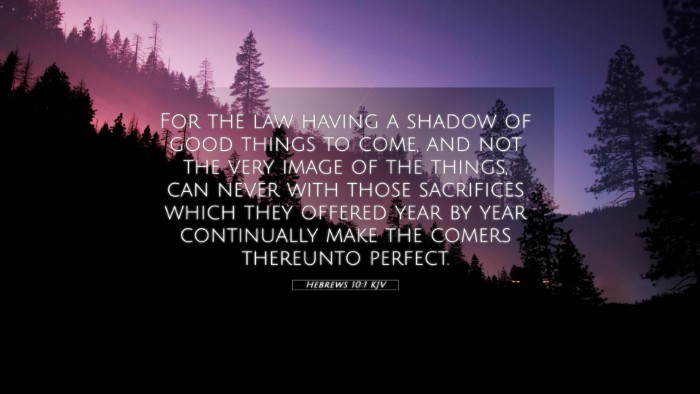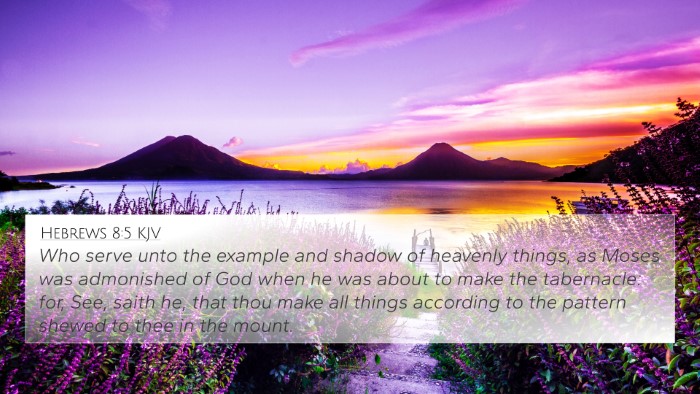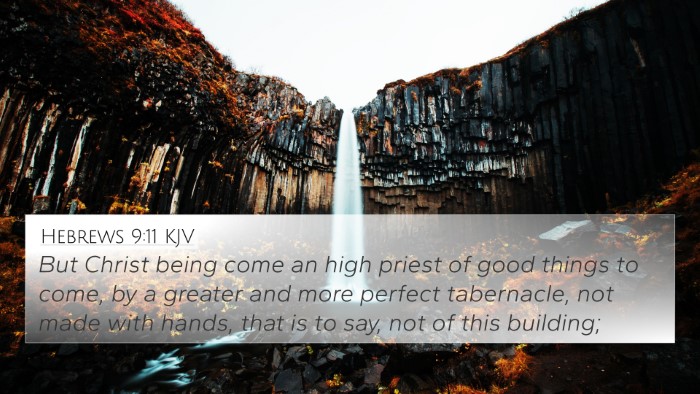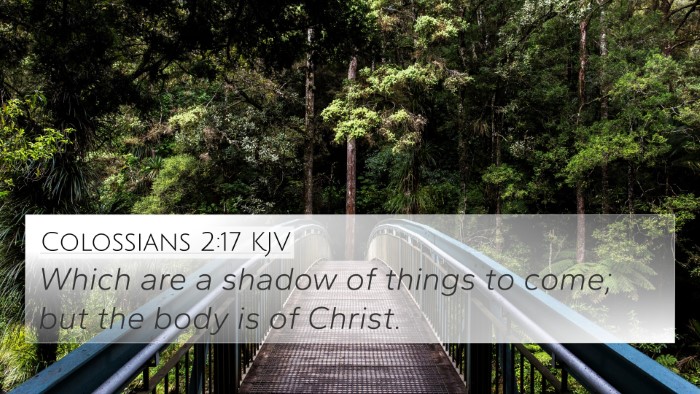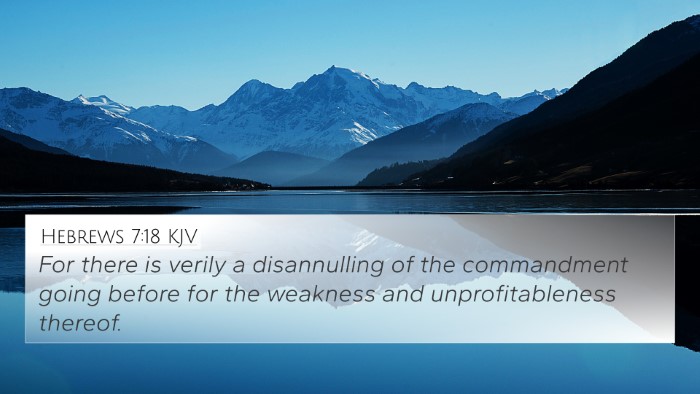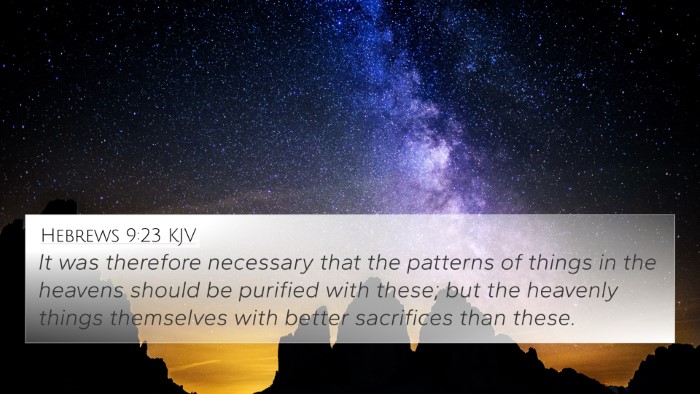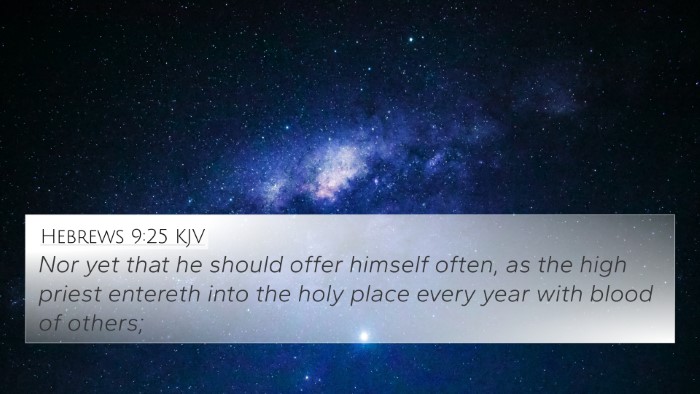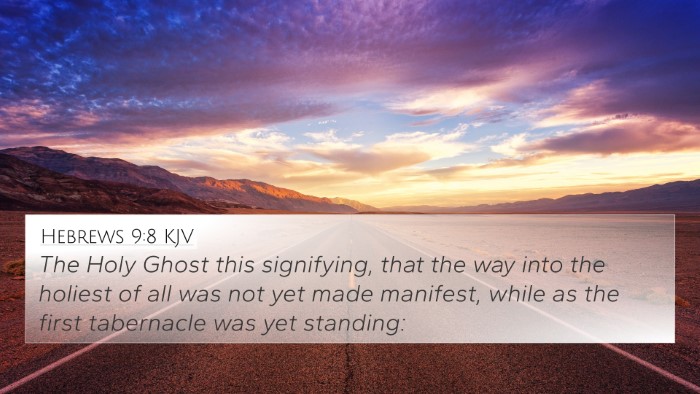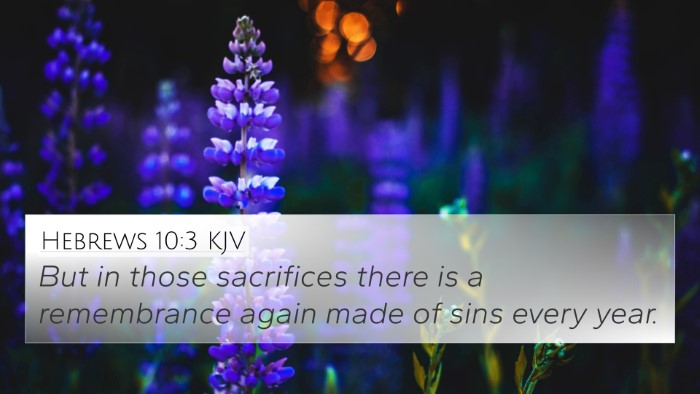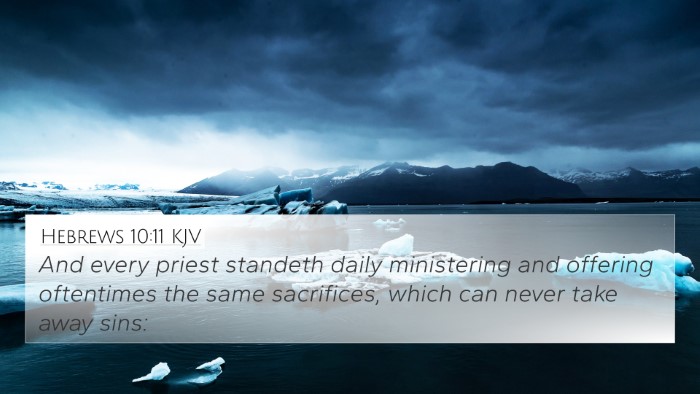Understanding Hebrews 10:1
Verse: Hebrews 10:1 - "For the law, having a shadow of good things to come, and not the very image of the things, can never with those sacrifices which they offered year by year continually make the comers thereunto perfect."
Summary of Meaning
The verse in Hebrews 10:1 presents a profound theological insight regarding the relationship between the Old Testament sacrificial system and the ultimate sacrifice of Jesus Christ. The verse emphasizes that the sacrifices made under the Old Covenant were merely a shadow of the greater reality that would be fulfilled in the New Covenant through Christ.
Insights from Commentaries
-
Matthew Henry:
Henry highlights that the law served as a foreshadowing tool, aimed at preparing humanity for the coming of Christ. He elucidates that while the old sacrifices were repeated annually, their inability to achieve ultimate perfection is a pointer toward the necessity of Christ's sacrifice.
-
Albert Barnes:
Barnes expands on the idea of the law's shadow, explaining that the sacrifices were never intended to be an end in themselves. Instead, they were designed to direct attention to the profound work of atonement that would be completed through Christ. He claims that the ongoing ritual serves to highlight human imperfection and the need for divine intervention.
-
Adam Clarke:
Clarke provides a detailed analysis of the phrase "shadow of good things to come," noting that the rituals and sacrifices pointed forward to a future fulfillment in Christ. He suggests that understanding this connection fosters a deeper appreciation for the comprehensive scope of God's redemptive plan.
Connections with Other Bible Verses
This verse can be cross-referenced with several other scriptures that elaborate on the themes of sacrifice, redemption, and the superiority of Christ's work:
- Colossians 2:17: "Which are a shadow of things to come; but the body is of Christ." - This verse underscores the concept of the Old Covenant as a foreshadowing of the reality found in Christ.
- Hebrews 9:9-10: "Which was a figure for the time then present, in which were offered both gifts and sacrifices..." - Reminding readers that the sacrifices were temporary and incomplete.
- 1 Peter 1:19: "...but with the precious blood of Christ, as of a lamb without blemish and without spot." - This verse affirms the perfect nature of Christ's sacrifice compared to the old sacrificial system.
- Romans 8:3: "For what the law could not do in that it was weak through the flesh, God sending his own Son in the likeness of sinful flesh..." - This passage emphasizes the inadequacy of the law in achieving righteousness and points to Christ as the solution.
- John 1:29: "Behold the Lamb of God, which taketh away the sin of the world!" – This introduction to Christ as the ultimate sacrifice highlights the fulfillment of Old Testament symbols.
- Hebrews 10:10: "By the which will we are sanctified through the offering of the body of Jesus Christ once for all." - Demonstrating the one-time sufficient sacrifice of Christ in contrast to the repeated sacrifices of the Old Covenant.
- Matthew 5:17: "Think not that I am come to destroy the law, or the prophets: I am not come to destroy, but to fulfill." - Here, Jesus indicates His role in completion of the law's intent and purpose.
Thematic Connections
This exploration of Hebrews 10:1 provides insight into overarching themes in the Bible such as:
- Redemption: The need for a perfect sacrifice as fulfilled in Christ.
- Typology: How the Old Covenant sets the groundwork for understanding New Testament writings.
- Fulfillment: The transition from the law to grace through Jesus Christ.
Cross-Referencing Biblical Texts
Understanding the connections between various scripture passages enhances comprehension and application of biblical principles. Tools for cross-referencing such as a Bible concordance or Bible reference resources can be utilized to further explore these links. Here are some methods for effective cross-referencing:
- Utilize a Bible cross-reference guide to find related verses.
- Engage in cross-reference Bible study to examine themes across different books.
- Employ a comprehensive Bible cross-reference system to facilitate in-depth study.
In conclusion, Hebrews 10:1 encapsulates vital theological insights into the nature of the law and the sacrificial system, inviting believers to engage in further study through scriptural cross-referencing and thematic exploration. By appreciating these connections, readers can deepen their understanding of God's progressive revelation throughout the Bible.

